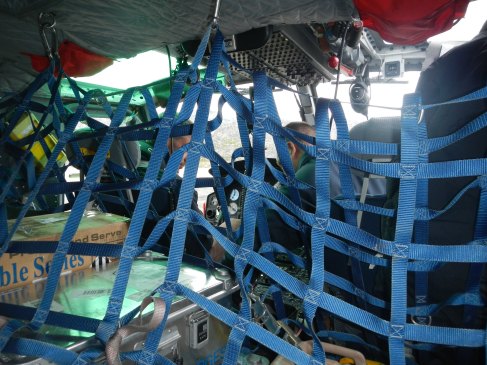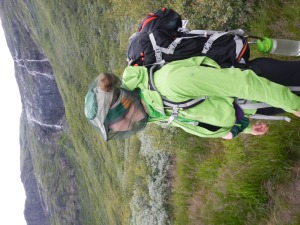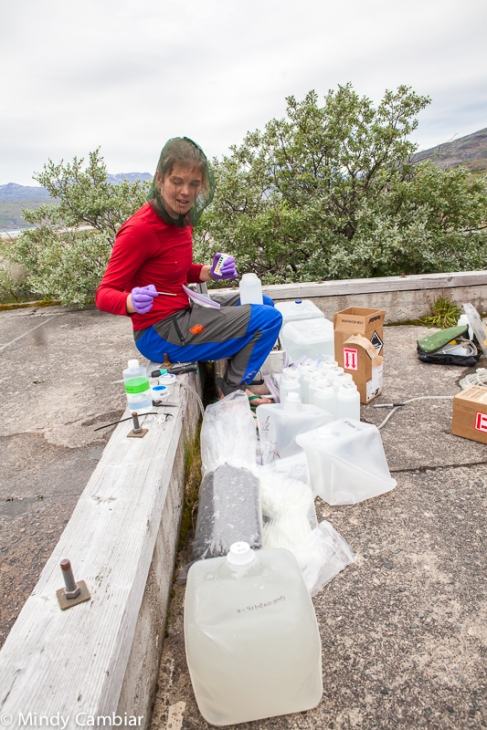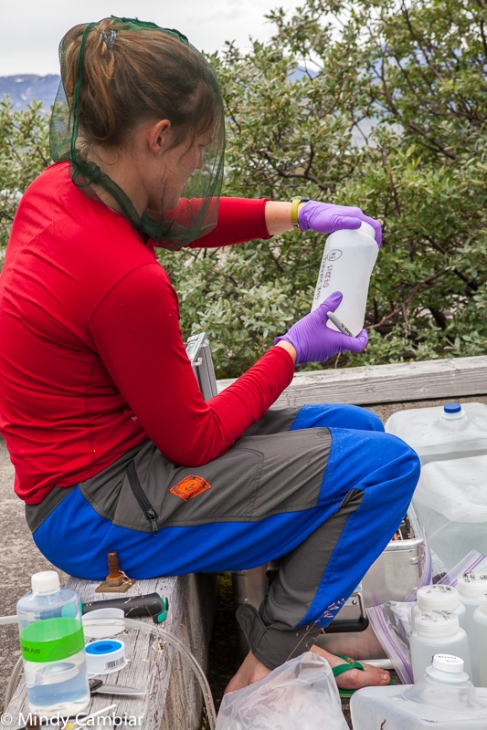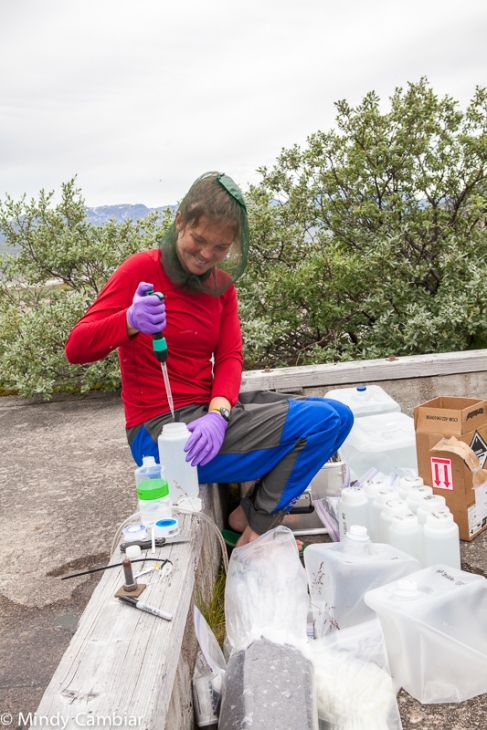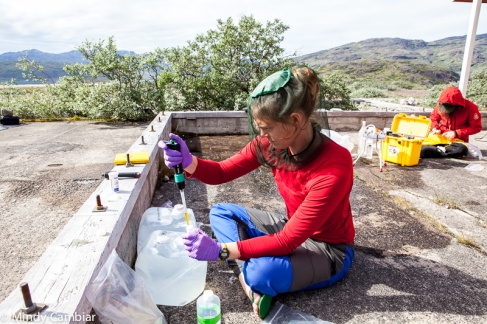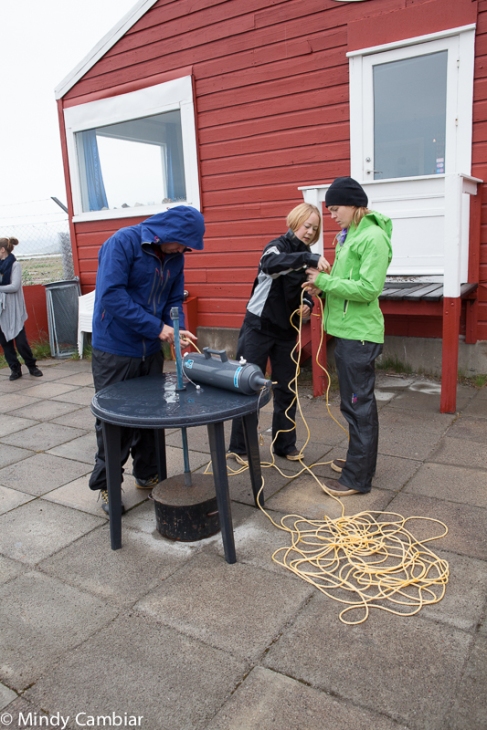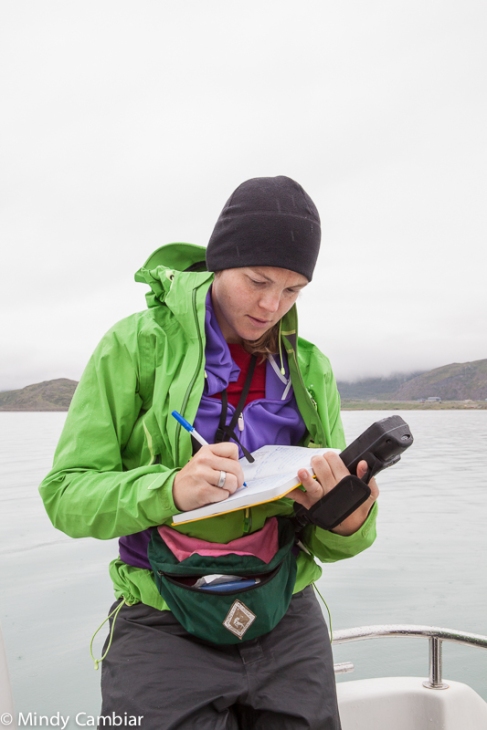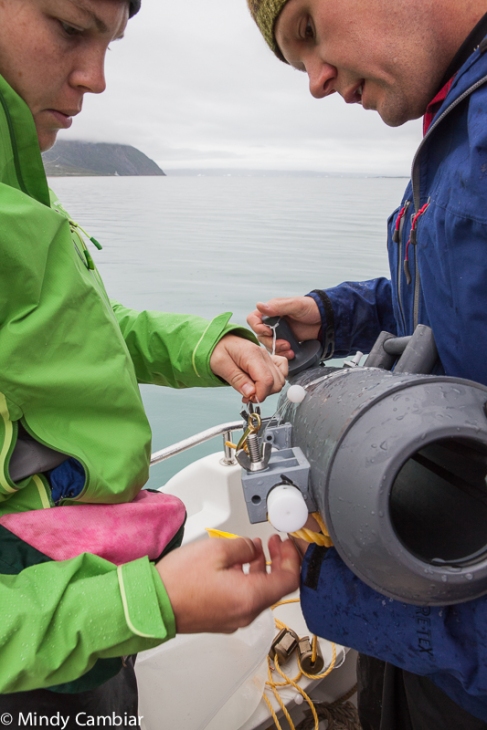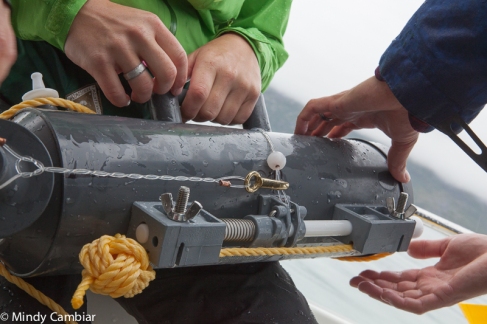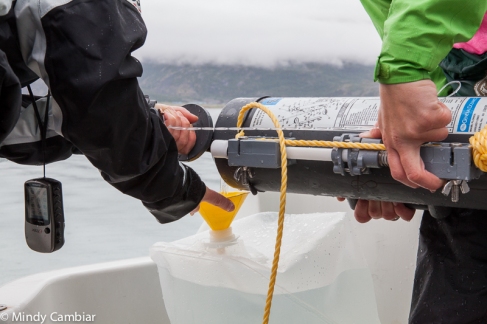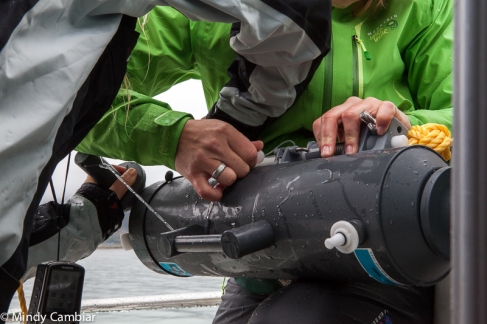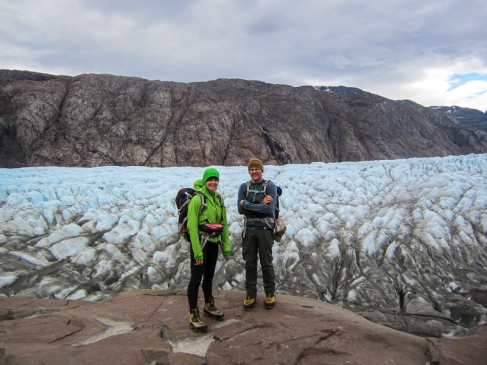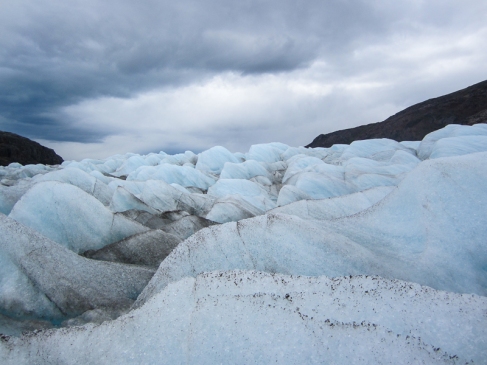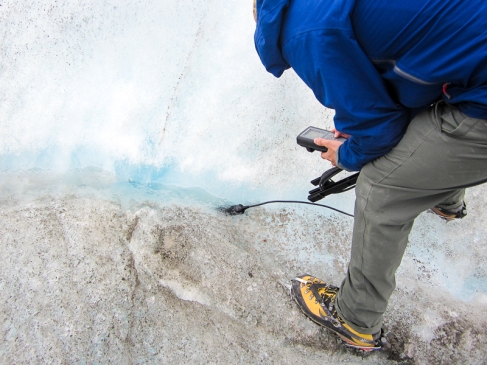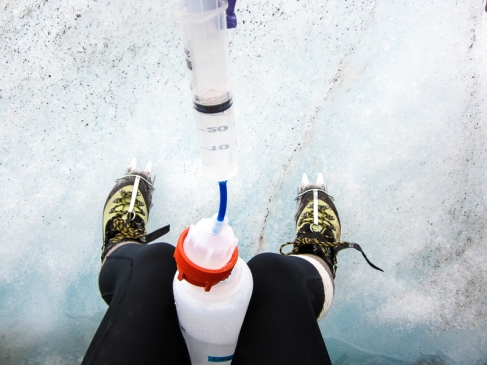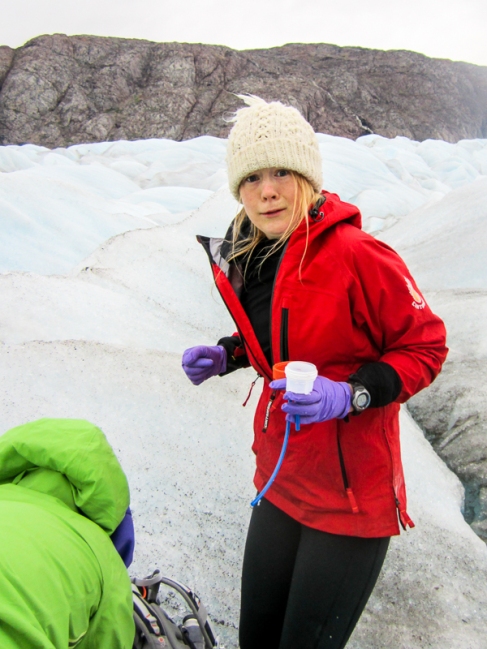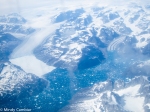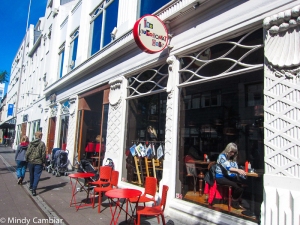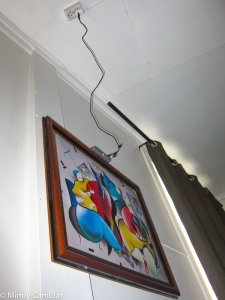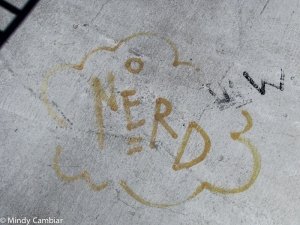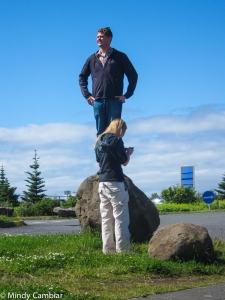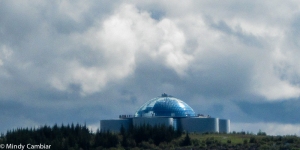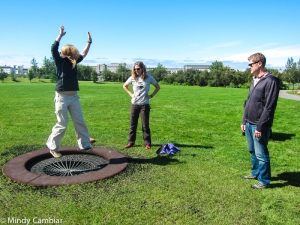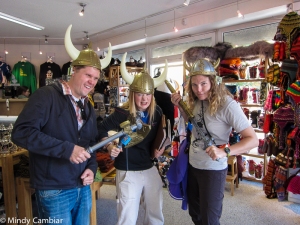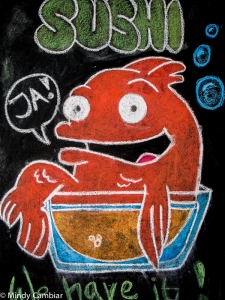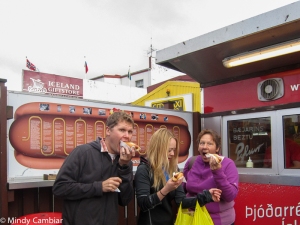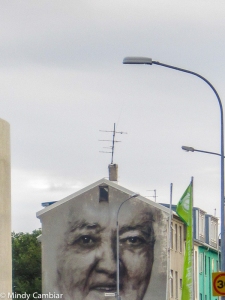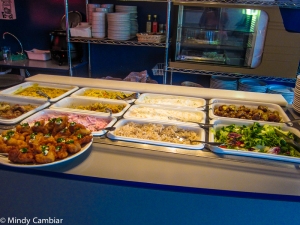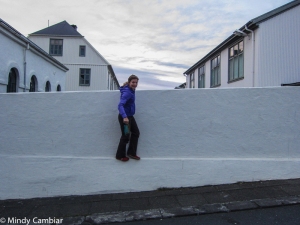After 4 separate flights in 6 hours, Carli and Emily finally landed into Ilulissat, and venturing north of the Artic circle at 69.1°N. Unlike Narsarsuaq, which is nestled several kilometers inland, Ilulissat is a coastal town, adjacent to a massive ocean terminating glacier and UNESCO world heritage site. As we flew into the town we were in awe of giant ice bergs floating in the sea – some several magnitudes larger than the ‘Big House’ – that had calved from the Sermeq Kujalleq Glacier.
The next morning, Carli and Emily arrived bright (as if there was any other choice with 24hrs of daylight…) and early at the Air Greenland to helicopter out to Sarah Das’ field station at toe of the Sarqardliup Sermia (the second outlet glacier to the south of the Jakobshavans Glacier). However, as our luck would have it, after we waited for the weather to clear, got the go ahead from the Das camp, had all of our cargo loaded, and we were buckled in with our headsets on ready for takeoff – the pilot noticed that the black box/voice recorder was broken (which is the supposedly indestructible device that is supposed to be recovered completely unharmed in even the most destructive of crashes) so the flight was cancelled and we all had to pile out and troubleshoot what to do next as we waited for news on when the part could be replaced. Luckily, the two of us were not the only people attempting to enter the field that day, a photojournalist couple (two wonderful human beings) was also scheduled to depart with us and since they had been in Ilulissat for several days already, they took us under their wing and helped us with transportation, accommodation, contacts, and seriously helped ease the disappointment of our sudden change of plans.




